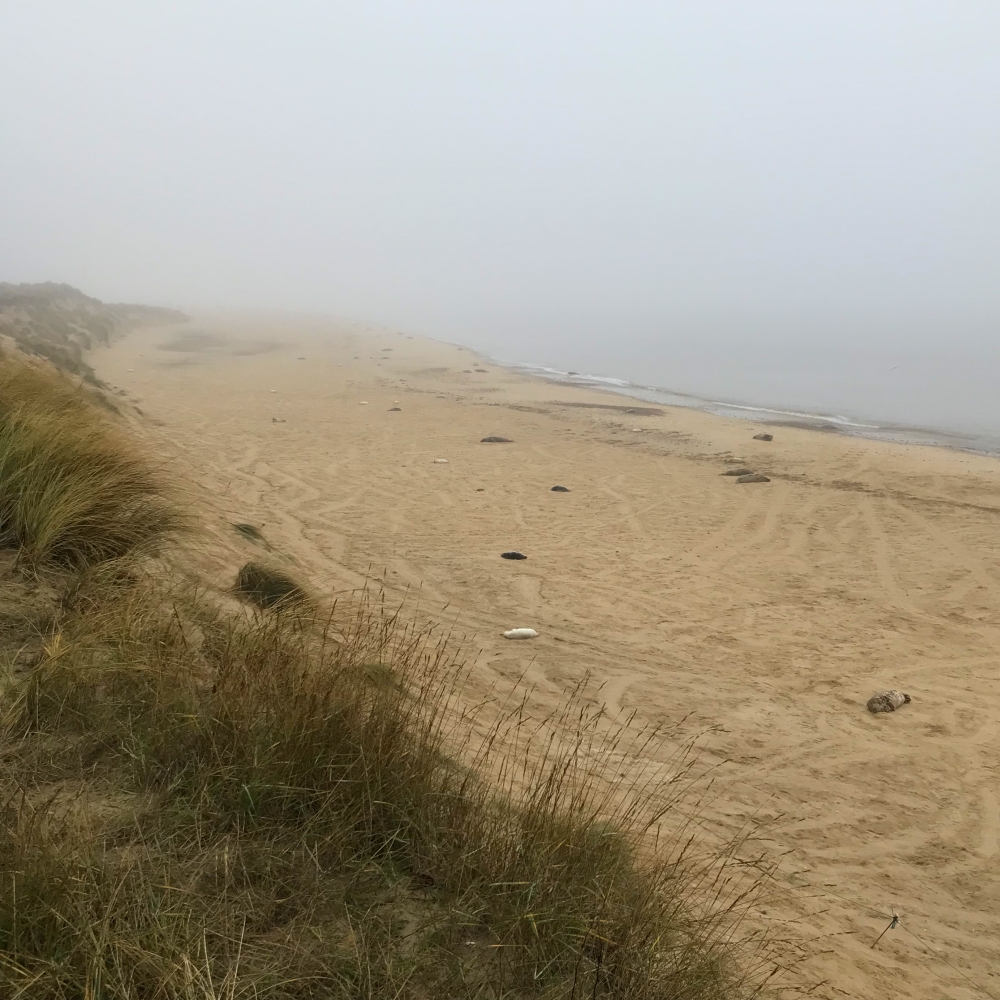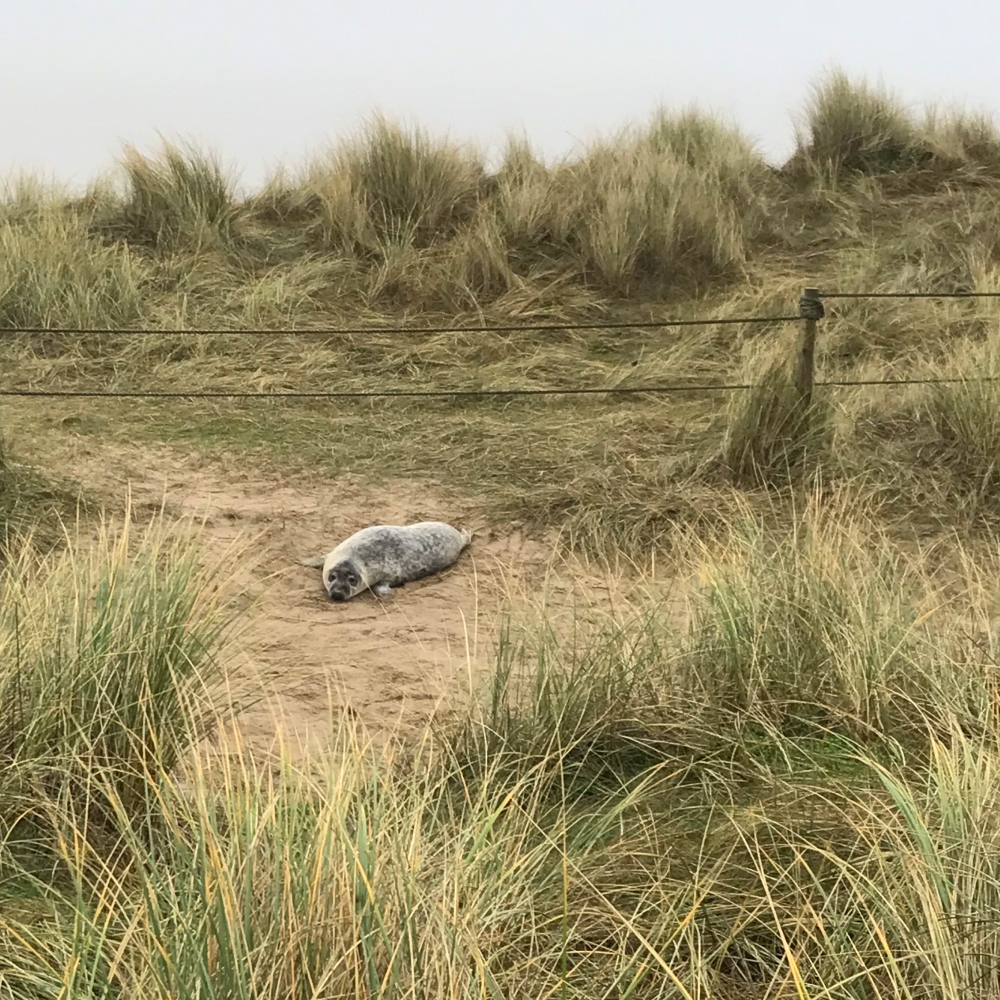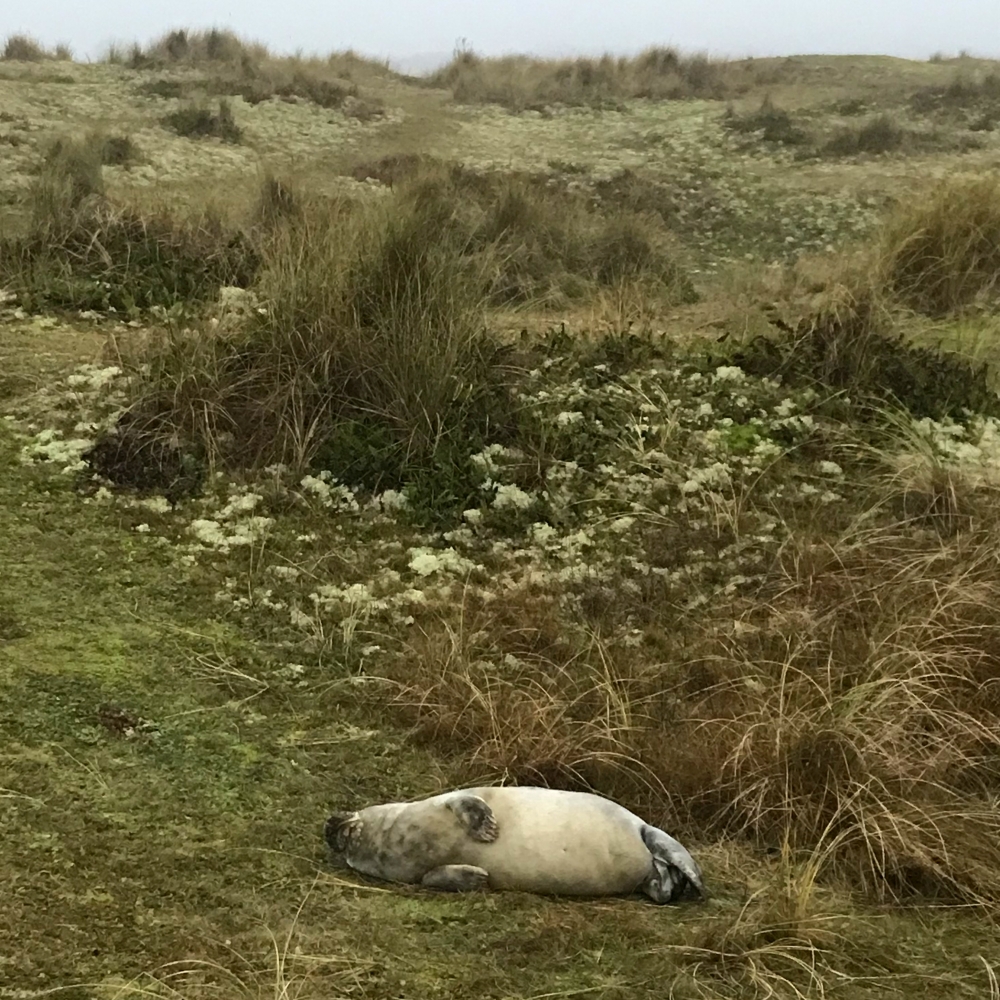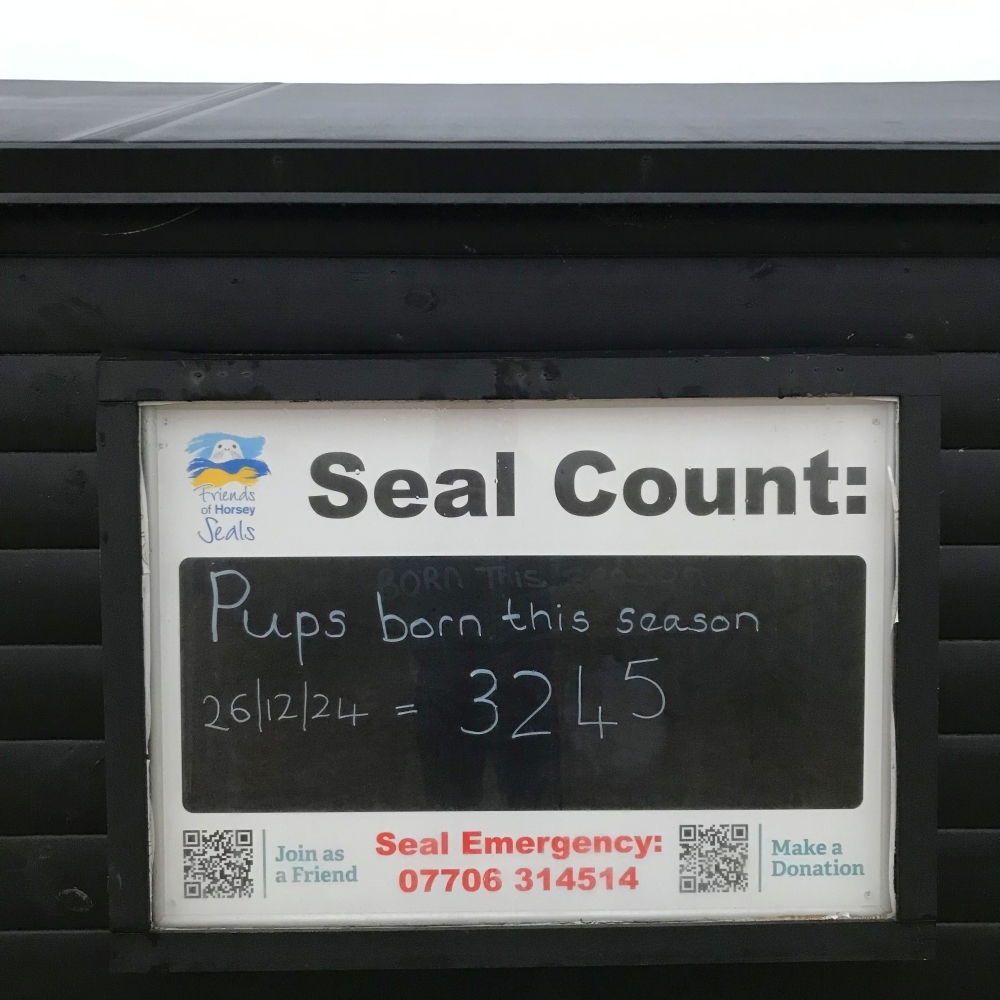In the face of climate change, the seals colonising the coast of East Anglia are a much-needed success story, writes Daniel Williams.

Norfolk is shrouded in mist as we head out of Norwich, the weather intensifying the sense of time being stilled between Christmas and New Year. Vainly I imagine that an offshore breeze might keep the view out to sea clear once we are standing on the gentle rise of the dunes at Winterton-on-Sea, but if anything, the fog becomes more impenetrable the closer we get to the coast.
In the clifftop car park, knots of people are gathered at its edge. What can they possibly be looking at, beyond a few yards of sandy beach and the North Sea merging with the befogged sky? We join them on the edge and peer down. Scattered here and there across the sand as far as sight allows are what first appear to be obelisk-shaped rocks. It’s only when the rocks move that you realise they are not displaced pieces of coastal defence, but are in fact Atlantic grey seals, together with their white-furred offspring. We’ve found ourselves at the heart of seal pup season along the east Norfolk coast.
In her eighties, my mother is more than a little unsteady on her feet, so between us, my sister and I support her to the cliff edge. She says it’s the first time in her life that she’s seen seals, although the colony founded on this stretch of coast actually dates back two decades. My brother-in-law can remember the time before they arrived, when he and his friends would take a Boxing Day ride along the beach on their motorbikes, all the way from Winterton to Sea Palling and back again.

We head beyond a quintet of fishing huts into the dunes, encountering a dozen or so volunteers (from a pool of 350-odd) in hi-vis jackets. These are the Friends of Horsey Seals, mounting their operation to afford the seal pups maximum protection from human beings, who are naturally excited to see the newborn pinnepeds and, without the wardens, likely to venture far too close for either species’ comfort and safety. This is particularly the case in the dunes, where a number of pups are seemingly marooned next to pathways. One of the volunteers tells us about the unsentimental reality of seal parenthood. Mothers will stay with the pups for around three weeks, weaning them on high-fat milk which blubbers them up from around 13kg at birth to 45kg. The mothers then return to the sea, while the pups remain where they were born for another three weeks before they too make their way to the water’s edge.
In the fog, vision is limited to the undulations of the dunes; nothing seems to exist beyond them. Alone, you might feel this place to be as grotesque and mysterious as the Kent marshes at the start of Great Expectations. Yet in company, within the enclosure afforded by the mist, it feels as safe a place as any for a newborn pup. We see their unpigmented lanugo coats standing out against the marram grass and lichen, cute enough at this stage to match their representation as cuddly toys, and yet already mottling with grey as the fur transforms into the waterproof coats of sea-going mammals. Once mature (aged between three and five), they may go on to return to the shores of Norfolk (and now also to Orford Ness in Suffolk) to breed for the next 25-35 years.

Around 40% of the world’s grey seals (Halichoerus grypus — literally ‘hook-nosed sea pig’) live in the waters around the British Isles. Thanks to efforts like those of the Friends in terms of protecting (and indeed policing) this safe haven, as well as cleaner North Sea waters, their numbers are on the increase. Winterton-on-Sea is the east Norfolk seal colony’s southernmost outpost; to the north, on the less easily accessed beach at Horsey, you can see them beached and clumped together in their hundreds. It’s a breathtaking sight, one to match anything you might see on safari in a more exotic location.
A board attached to the fishing huts records that by Boxing Day, two-thirds of the way through the three-month pupping season, 3,245 pups had been born along this stretch of coast, meaning the colony won’t quite attain the record numbers of last year. Though their initial appearance on the east Norfolk coast probably owes something to an already changed climate affecting food sources further north, the Horsey and Winterton-on-Sea seals are a rare natural success story. So often we hear about the depletion of wildlife and biodiversity in the face of ceaseless human consumption and encroachment; the work of the Friends show that all is not yet lost where nature is concerned, and that through active, respectful, sensitive engagement, we can impact upon the environment for good rather than ill.

*
Visit Daniel’s website here or follow him on Instagram.
Find out more about the Friends of Horsey Seals here.